Visiting the fantastic Rétromobile show, in Paris
Posted by Chris Graham on 8th April 2024
Mike Neale visited France’s biggest historic transport show, Rétromobile, which always showcases an amazing range of fascinating vehicles.
All photographs by Mike Neale

Rétromobile: 1873 Amédée Bollée steam bus was the best around at the time, and a number were made.
The French capital’s classic car show – Rétromobile – takes place at the Porte de Versailles exhibition centre from January 31st to February 4th. I hopped on the Eurostar to Paris and wasn’t disappointed. As usual, there was a wide range of exhibits of all shapes and sizes spread across three halls plus the linking bridge, and a few on display outside.
Various new car manufacturers had stands at the show, with Volkswagen, Skoda and Renault having big displays. Notable absentees this year were Citroen and Peugeot, previously a major presence, but the owner of these two brands, Stellantis, seems to be reducing its level of participation in worldwide car shows generally to save costs, leaving it to the various owners’ clubs to represent these marques at Rétromobile. However, one of the stars was the British Motor Museum’s (Gaydon) 17-car MG display, that was mostly made up of the marque’s best ‘sporty’ cars, starting with the 1925 car, and including the 1939 Goldie Gardner EX135 and the 1959 EX81 speed record cars.

A floral Renault Juvaquatre van looking the part.
This year there weren’t so many classic commercial vehicles on display on the official manufacturers’ stands, although Volkswagen was showing a number of Type 2 Combis, including a 1965 T1 (split windscreen) 23-window Samba, alongside a later water-cooled T2 and its current interpretation.
A floral display incorporated a typical 1950s French light delivery van, a light grey Renault Juvaquatre in the livery of Jardinerie Laurent Laplace, a small family business owned by a classic car enthusiast. The ‘Juva’ was in production from 1938 to 1960, initially with a one-litre engine, then the 747cc unit from the Renault 4CV from 1953 and finally the 845cc Dauphine engine after 1956. Externally, it was largely unchanged throughout its 22-year lifespan.
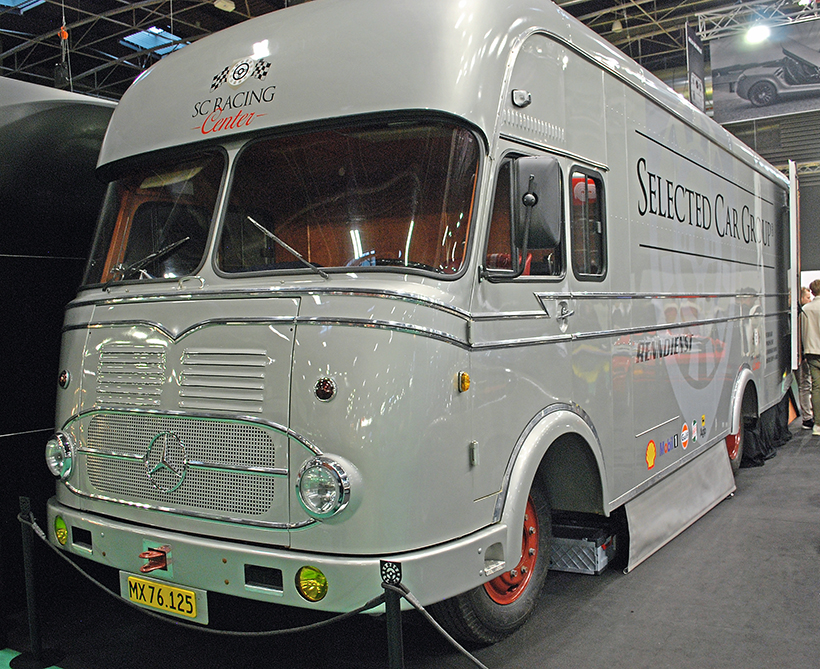
A former Mercedes furniture lorry is now a champagne bar for a car dealer.
The standout example of a large commercial was the 1959 Mercedes-Benz LP311/312 that had started out as a furniture truck. It was restored and converted into a race transporter by an enthusiast for his 1955 Mercedes 300SL racing car, but he decided that it was too new, as typically race teams would buy an old truck to transport their new racing cars, so he sold it to buy a 1940s Mercedes truck. It was bought by Danish classic car dealers Selected Car Investment who have fitted it out internally as a bar for shows. This is all removable, should they need to transport a car again, as the winch and ramps are all still working, and slide under the bar.

The huge Scammell SV2S Pioneer recovery truck looks the part.
Probably the largest vehicle on display was the 1940 Scammell Pioneer SV2S 6×4 recovery truck on the Musée des Blindés (Armoured Vehicles Museum) stand. The museum is located in Saumur in the Loire Valley, having been established in 1977. These Scammells were originally developed for the oil and forestry industries, and were widely used during the Second World War as successful artillery tractors, heavy wreckers and tank transporters. Their long-travel suspension and high-torque, six-cylinder Gardner diesel engines gave them excellent performance over rough terrain, and their impressive traction ability ensured a long life after they passed into civilian ownership.
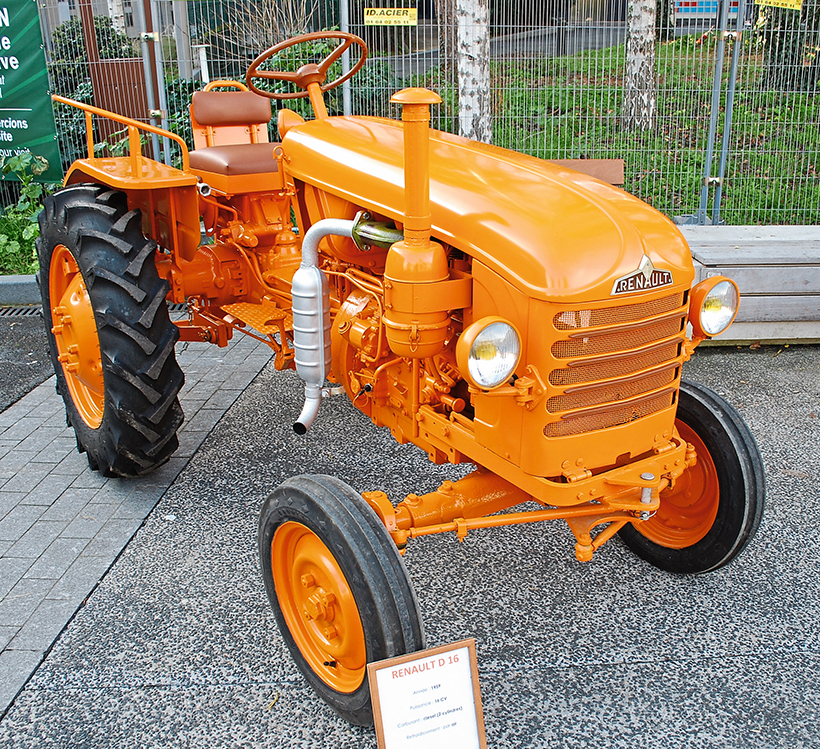
1959 Renault D16 tractor in its traditional livery.
Tractor enthusiasts weren’t disappointed as there was a display of around 10 machines outside Hall 3. These included a 1959 Renault D16 with an air-cooled German MWM two-cylinder 16CV diesel engine and a six-speed gearbox, in production from November 1958 to March 1960, with some 3,745 built.
A 1954 Deutz F1L612 tractor had a single-cylinder, air-cooled 11CV diesel engine and again a six-speed gearbox and was part of the company’s line between 1953 and ’58. Of course, Deutz was one of the first German companies to use diesel engines in their tractors starting in 1926. This was the standard width version, though various designations were made including a narrow and vineyard of course.
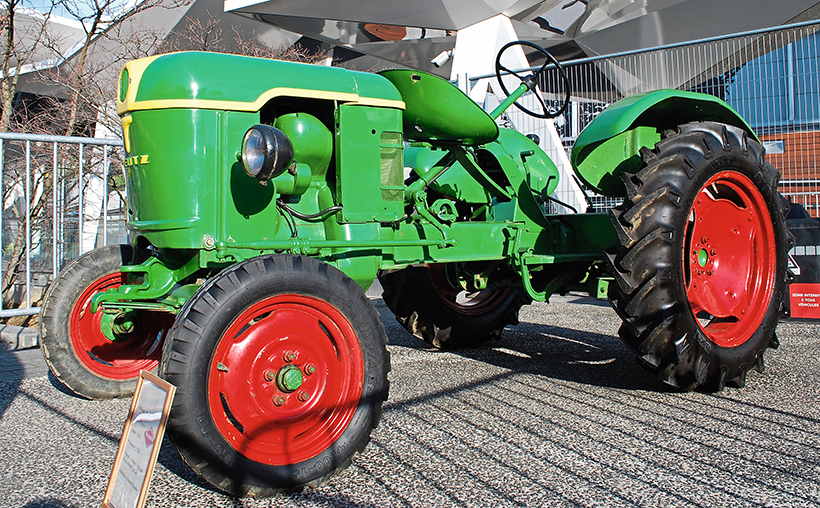
An air-cooled Deutz F1L612 dating from 1954; a very popular tractor in Germany
There was a 1942 HSCS 20/22 tractor, which I must admit was a new one on me. They were built in Hungary by Hofherr Schrantz Clayton Shuttleworth from 1932-47, with a single-cylinder, water-cooled diesel engine with a three- or six-speed transmission. Mathias Hofherr founded an agricultural machinery company in Vienna in 1869, joined by Hungarian-born Janos Schrantz in 1881.
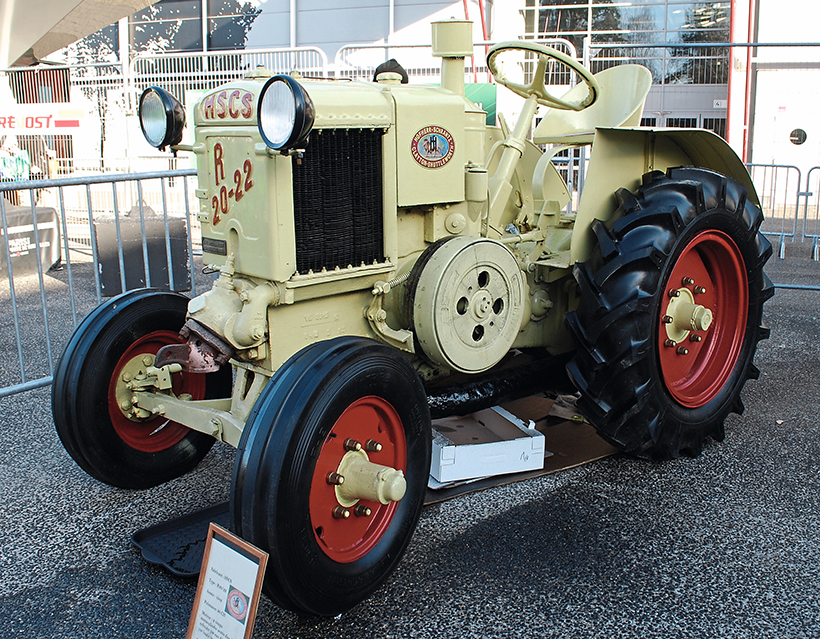
Hofherr Schrantz Clayton Shuttleworth 20/22 tractor. These machines were exported all over the world, including Australia where they were popular for a time.
British firm Clayton & Shuttleworth established itself in Vienna in 1857 and later in Budapest then, in 1912, the two firms combined to become HSCS. This was owing to peoples’ resentment of imported manufacturers’ goods such as Clayton & Shuttleworth. The company had done so well in Eastern Europe – especially with its portables – and, together with Garrett, made more portables world-wide than any other manufacturer; a little-known fact.
Also on display outside was Motul’s fantastically original 1945 Renault AHS3 lorry, nicknamed Vagabond. It originally served in the army until 1955, after which it was used for several decades to deliver motor oil products; one of many similar vehicles Motul used to do so. It had been discovered in 2018 abandoned in northern France and preserved dans son jus, as the French say. The chassis, engine and gearbox were restored, and the lorry now regularly appears at shows in France and the UK.
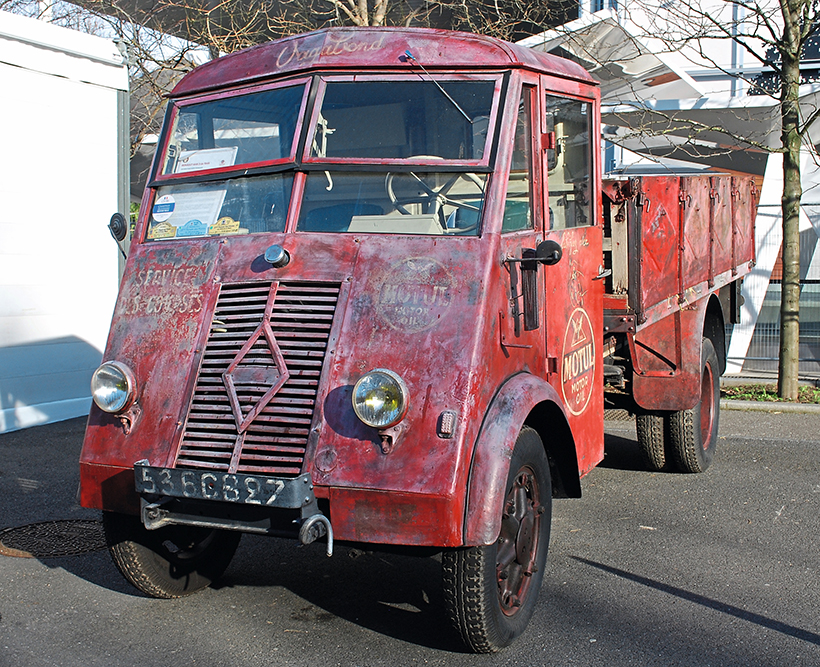
The wonderfully preserved Motul Renault AHS3 which has been seen in the UK a number of times.
There was a 1938 Renault AGC2 1.5-tonne delivery van in the livery of Vache Grosjean, a cheese company based not far from the Alps, and a competitor to La Vache Qui Rit (the Laughing Cow). The vehicle was a familiar sight in the region until 1960 and was then kept in a barn, before being given by the family that owned it to the Fondation Berliet, which preserves all makes of vehicle with a connection to the Lyon area, not just those made by Berliet. A sensitive restoration was undertaken, including repainting the vehicle in its 1950s livery. It has a 2.4-litre, four-cylinder petrol engine.
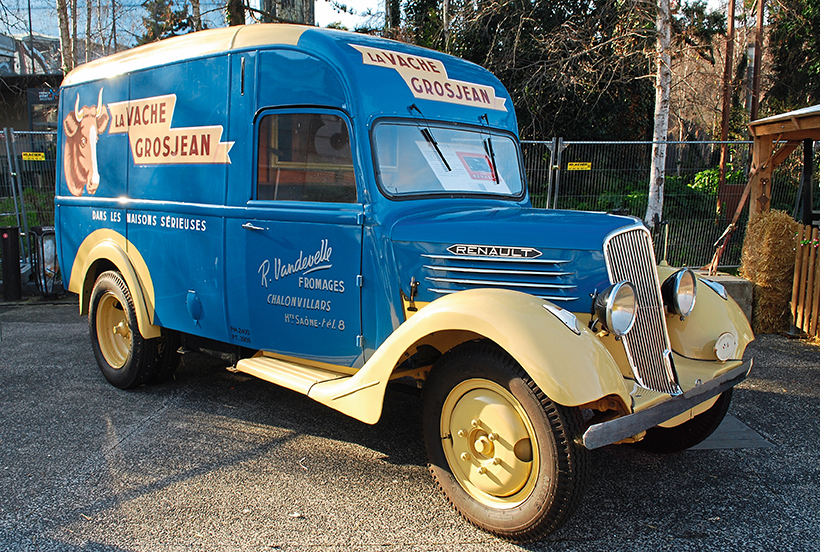
The Vache Grosjean 1938 Renault AGC2.
An earlier Renault commercial was the 1925 Renault MT Marchande displayed by the Club des Teuf-Teuf, the French Veteran Car Club. Marchande was the name used by Renault for utility vehicles with a rear body made of wood. This one was very original and unrestored. It has a 951cc, four-cylinder 6CV engine and a three-speed manual gearbox, and was derived from the Renault MT car, built from 1923-25, with almost 15,000 produced of all body types. It’s photographed next to an orange and black 1913 Renault DP 22CV with a 5,025cc engine.
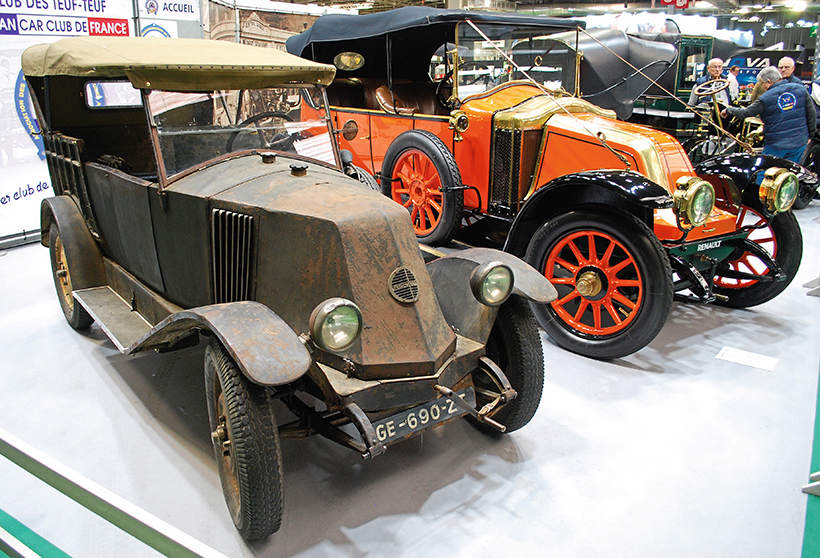
All-original 1925 Renault MT Marchande delivery vehicle.
No French car show would be complete without a Citroen H van or two, and among those here was a restored example selling craft beer, a post-1964 one with the single-piece windscreen. The H van had a very long production run from 1948 to 1981, with over 473,000 built with many, of course, still in use as catering vans the world over.
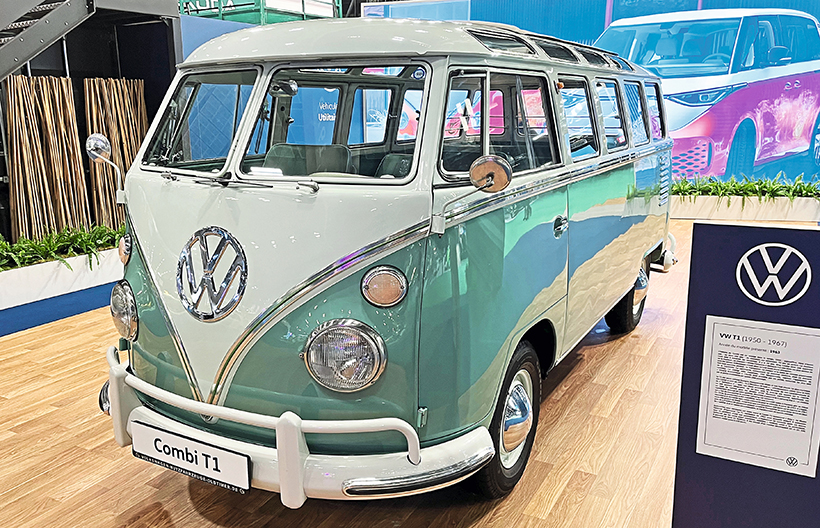
1965 VW T1 Combi displayed by Volkswagen and looking to be in concours condition.
Finally, a look back to one of the exhibits from the 2023 show, an 1873 Amédée Bollée steam bus known as The Obedient (l’Obéissante) because of its stability. Designed by bell-founder and inventor Amédée-Ernest Bollée, it could carry 12 passengers. To promote it, he drove it the 230km between Le Mans and Paris in 18 hours, including water and food stops.
It features chain-drive and two V-twin cylinder steam engines, one powering each rear wheel, and boasts a cruising speed of 30km/h plus a top speed of 40km/h. It was very successful and a number were made and used for some decades. It was exhibited by the Paris Musée des Arts et Métiers where it is normally displayed.
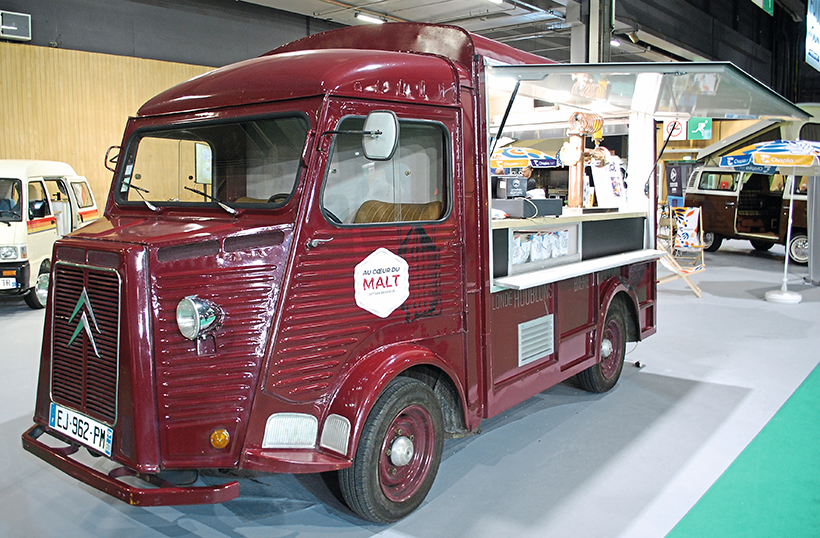
You would expect at least one Citroen H van at Rétromobile!
As ever, there was a good selection of stalls selling models, books, car parts, petrol pumps and memorabilia, as well as cars. There was also a classic car auction by Artcurial. If you’ve never been to this show, it’s well worth the effort. Dates for next year’s five-day event are yet to be confirmed, but it’ll likely take place at the beginning of February, 2025.
This feature comes from the latest issue of Old Glory, and you can get a money-saving subscription to this magazine simply by clicking HERE
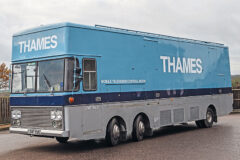
Previous Post
Restoring a 1967 Bedford VAL 14 outside broadcast unit

Next Post
Visiting the wonderful Darjeeling Himalayan Railway



